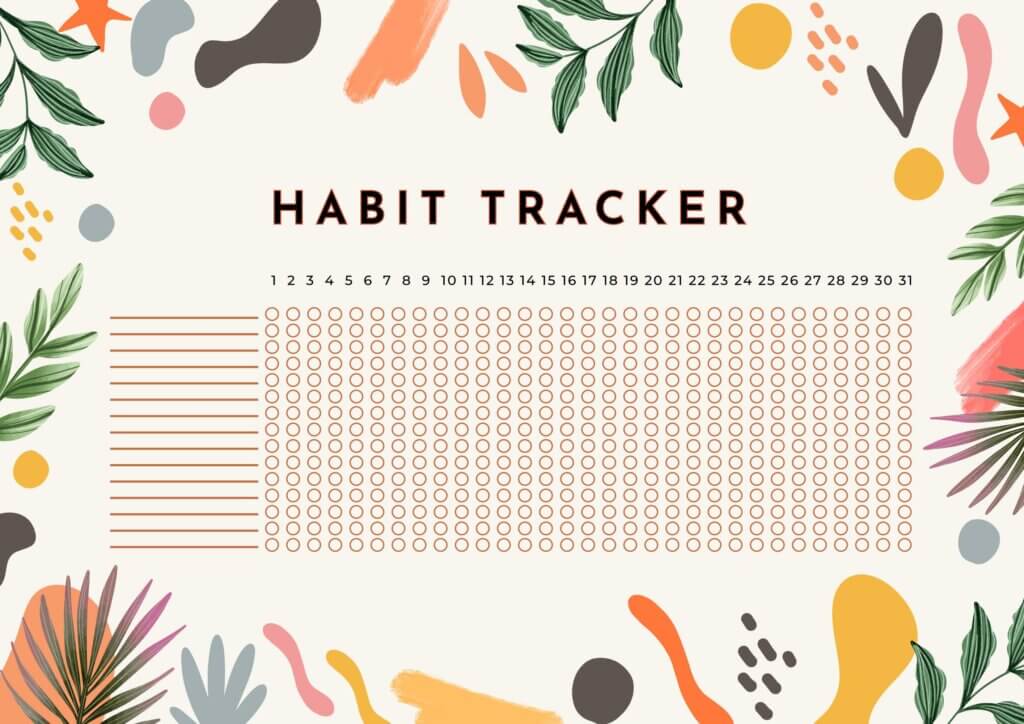Every year, a long list of New Year’s resolutions lands on our tables. January 1 is not better or worse than November 23, but for some reason, you expect yourself to eat healthier, spend less time on your phone, and start a yoga challenge. Do you manage to stick to these habits, or do you usually give up on them after a few weeks or months? Here, we present six steps that can help you review the New Year’s resolutions, wishes, and goals and actually achieve them.
We all become overly ambitious when anticipating the turn of the year. At some point in December or January, many of us make wishes and resolutions for the coming year to open them next December and feel miserable for achieving only a little. Several difficulties lead to this situation—the most common being not choosing your own New Year’s resolutions but those omnipresent in the media. Luckily, several tools and techniques can help you to attend to your resolutions throughout the year. Curious to learn more?
Resolutions Come in Different Shapes and Sizes
First, let’s define the creature we are dealing with. New Year’s resolutions often come as quantifiable numerical goals (money saved, pounds lost, kilometers ran) or abstract, vague attitude statements (feel more energetic, be grateful, show love to your family). We can also formulate our resolutions differently: as negative and as positive statements. Negative statements encourage us to avoid a particular type of behavior. If you’ve written on your list, for example, “I should not sit at my desk the whole day long,”—that is a negative resolution. Positive statements affirm us to employ a specific action, like “I should go for a run two times a week.”
Why is it so difficult to keep your resolutions when the recipe is crystal clear — “just do it”? There are several reasons behind not sticking to your goals. The most common—you’re choosing resolutions that are not yours. Although starting with investments or pilates sounds alluring, these activities might not align with your values, lifestyle, and interests. Sometimes, we tend to pursue unrealistic goals. It’s not that you can’t dream big, but you should relate to the possibility of achieving this resolution in 12 months.
Finally, there is a psychological trick that stands in our way: it’s hard to relate to our future selves. Let’s say you want to save money for a trip to India. You have to make a choice many times a day: should I get a coffee now or save these 3 dollars for later (apologies for a trivial example). Although rationally it’s more important to save money for your “future self” to go on a trip, you often choose momentary gains, like a cup of coffee, over actions with postponed results.
This is due to a cognitive bias that makes us perceive our “future selves” as unknown, irrelevant people. And why would you then cut down on your coffee expenses so that an unknown person can go to India in two years? Fortunately, there is a trick to narrow the gap between our current selves and future selves, making sticking to long-term resolutions much more manageable.

6 Techniques to Achieve Your New Year’s Resolutions
1. Write Down and Review
Always write down your resolutions, whether on a piece of paper or in a digital form. It is essential to have them not just in your head but materialized in some form—this strengthens the commitment. If you have a list from the previous year, get it out as well.
What are your resolutions for this year? Are they numerical, abstract, negative, or affirmative? Is there a repetitive resolution you write down every year but never achieve? Do you actually need to do all these things, or is this intermittent fasting just a matter of fashion? If you want to read, for example, 30 books a year, explain why.
After this revision, it might be that you’ve already let go of some resolutions and wishes—that’s fantastic! You can’t have too many New Year’s resolutions, so leave only those that truly matter.
Have a look at the wording of your resolutions. Prefer quite specific and positive goals over abstract and negative ones. “I want to read 30 business books a year” is much better than “I want to read more this year.” But 30 books might still not be specific and achievable enough (good luck reading 30 books of one thousand pages each!). Better phrase this resolution like that: “I will read 20 minutes before going to bed at least three times a week.” Such a statement already provides you with a clear action path.
2. Make SMART Goals
Although resolutions are not strictly the same as yearly goals, you should turn them into goals to stick to them. “I want to be more grateful” is a resolution, but “I will keep a Gratitude Diary” is a goal (and don’t forget to explain why the feeling of gratitude is so essential). Add “Every morning while having breakfast, I will write down at least three things I am grateful for. I will do it in a special notebook,” and you are on a straight way to excellence.
A handy tool for goal-setting is a SMART system. This acronym helps you to check that each goal of yours is:
Specific
Measurable
Achievable
Relevant
Time-bound
Integrate these goals into your monthly, weekly, and daily agenda. And don’t forget that twelve months is quite a long period of time. So you should not rush to achieve everything on your list by January 30: start with one thing at a time. Gretchen Rubin sets a laudable example of this rule in The Happiness Project: each month of a year was devoted to one sphere of her life. You might experiment with doing something similar!
3. Habit Tracking
Habits are fundamental to our lives. Therefore, try to associate each goal with a specific routine you should implement. Like in the example with the gratitude diary, a resolution to be more grateful becomes a habit of filling in a journal every morning.

It’s not easy to implement a habit. So check this article for a guide on how to adopt new habits that actually work for you. Keep a habit tracker (as an app or in your bullet journal). It will not only help you evaluate your progress but also encourage you to stick to the habit. It’s so gratifying to put a tick every time you’ve achieved something.
4. Write a Letter from the Future
Writing a letter to yourself might feel unnatural, but it is a great tool that helps you to make a link between yourself and your “future self.” The mechanics of this letter-writing are the following:
Imagine yourself in 50 years in the most ideal life scenario. Let’s say you are in good health, you had an excellent career, you’ve seen the world, you’re surrounded by friends, and you have enough savings for a comfortable life. You are grateful to your “past self” for saving money, perseverance in your studies, and regular jogging. Write this gratitude letter to yourself—yeah, it will make you feel as if you’re in a new movie by Christopher Nolan. Jokes aside: now you have a better cognitive link between your everyday decisions and your future self.
You can use a service like FutureMe to receive this letter in half a year as a kind encouragement to stick to your New Year’s resolutions. Of course, you can use a more common version of sending a kind letter to your future self, encouraging you to keep to your yearly goals and cheer up in difficult times.
5. Change Your Mindset
When we talk about achievable goals, it doesn’t mean you can’t dream big, or you should be content with something small and controllable. You’re totally worth your dreams and capable of achieving big things!
You just have to acknowledge that having a dream does not grant you a plan for making it come true. You should plan ahead and foresee the possible difficulties and obstacles that could arise.
6. Update and Revise
Life circumstances change all the time (if the last year has not taught you that, I don’t know what can). Equally, your New Year’s resolutions and goals are not set in stone. Every two or three months, revise your list. Are some of your resolutions still relevant? Do you want to add a new one? You’re the one setting the rules of this game, so feel free to modify them as you flow.
Also, look at what you’ve achieved during these few months. Although you might not yet cross any resolution out of the list, you’ve probably made a few significant steps towards achieving them. Take credit for this success!
On a final note, remember that it’s not a must to make New Year’s resolutions and set yearly goals. Although these are valuable time and goal-management tools, they might not be suitable for you. We make resolutions and promises to help ourselves and have fun as we go, and they should not make you sorrowful. Find your individual way!


